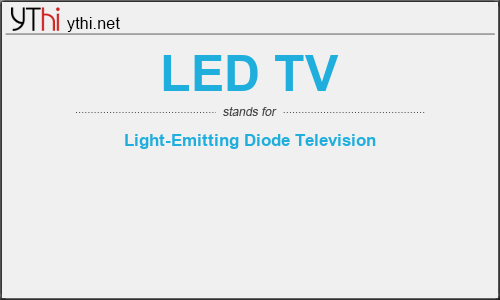What does LED TV mean? What is the full form of LED TV?
The full form of LED TV is Light-Emitting Diode Television.
LED TV is a type of LCD television that uses light-emitting diodes (LEDs) to backlight the display instead of the cold cathode fluorescent lights (CCFLs) used in standard LCD televisions. LED TVs are more formally known as LED-backlight LCD television.
An LED is a semiconductor device that emits visible light when an electric current passes through it. The light is not particularly bright, but in most LEDs it is monochromatic, occurring at a single wavelength. In comparison with fluorescent lights, LEDs have significantly lower power requirements and convert power to light more efficiently so that less is lost as heat and focus it more precisely so that there is less light leakage, which can cause fuzziness. An LED also lasts much longer than most other lighting technologies.
There are three different LED technologies used. The most commonly used of the three is edge-lit LED, in which white LEDs are situated around the edge of the screen and a diffusion panel employed to illuminate the display evenly. Edge-lit LED displays can be very thin. Another type is dynamic RGB LED, which are placed behind the panel. RGB LEDs make it possible to target areas for dimming more precisely, which in turn leads to truer reproduction of blacks and whites. In the third type of display, full-array LED, LEDs are positioned behind the panel similarly to the way they are with RGB LED displays but there is no capacity for localized dimming.
Quantum dot-based LED displays, in the research stage, are expected to enable LED TVs that will rival plasma for picture quality, and possibly even OLED.
Vendors of LED TVs include Kogan, LG, Panasonic, Philips, ProScan, Samsung, Toshiba and Vizio.
Pros: Use less power and produce less heat than plasma or other LCD TVs. RGB LED: Brighter, sharper display and better contrast ratio than other LCD TVs. Edge-lit LED: Thinner format.
LED TV
means
Light-Emitting Diode Television![]()
Translate Light-Emitting Diode Television to other language.


Leave a Reply
You must be logged in to post a comment.